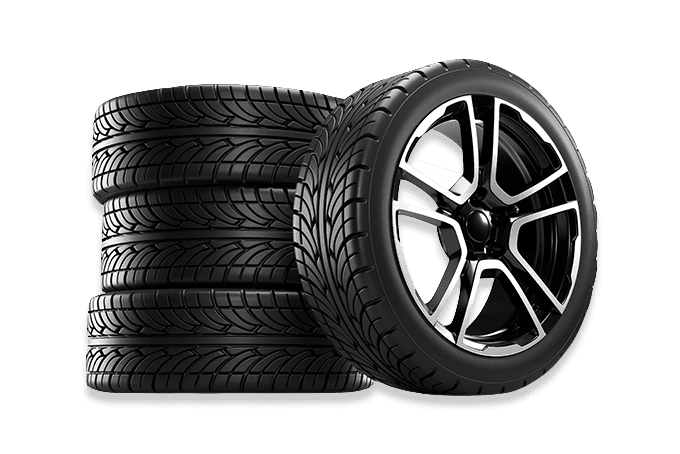TYRES

Tyres are your point of contact with the road and pivotal to your safety
At some stage in the life of your vehicle, a tyre replacement is necessary. It may be because excess wear and tear on your current tyres means it’s time for a set of new tyres, or an unfortunate incident with a pothole has ripped a hole.
Alternatively, a change in seasons may prompt a tyre change, so you can optimise your car for driving in all conditions, such as when the rains start and the roads become extra slippery.
Whatever the reason, our tyre-fitting guide provides vehicle owners with all the information they need to get started. But don’t worry, out team of skilled technicians are always available to advice.








Decoding the Markings
Service Description
The service description may not always appear on the tyre. If there is a “P” on the sidewall, it stands for “passenger car.” “LT” stands for Light Truck, and “T” stands for Temporary, which is primarily used for small spare tyres.
If a tyre does not have a “P” or another letter in front of the numbers, it is considered a “Euro-metric” tyre, conforming to the European tyre specifications.
Tyre Width
The first number to appear in the sequence is “225.” This number is the nominal width of the tyre (in millimetres) from one sidewall to the other.
Aspect Ratio
Following the slash, the next number in the sequence is “50” This number is the tyre’s aspect ratio – essentially the height of the tyre’s profile outward from the rim represented as a percentage of the tyre’s width. We calculate this number by dividing the tyre’s section height by the tyre’s width. So, if a tyre has an aspect ratio of 50, that means the height is 50% of its width.
Construction Type
This letter indicates the type of construction used within the casing of the tyre, which in our example is “R” for Radial construction. Other examples are “B” for Bias-ply or “D” for Diagonal construction. Radial tyres are the most common on the road today.
Rim Diameter
The number “17” in our example represents the diameter of the wheel rim in inches.
Load Index
In our example, “94” is a code for the maximum load a tyre can support when fully inflated. Passenger tyres have load indices spanning from 75 to 105. The carrying capacity for each value is described in a load index chart in your vehicle documentation.
Speed Rating
The letter denotes the maximum speed a tyre can sustain under its recommended load capacity. In our example, “W” is equivalent to a maximum speed of 270kph. Even though a tyre is capable of performing at this speed, drivers should not exceed legal speed limits.
Additional Markings
- Self-supporting run-flat tyre
- Manufacturer original equipment
- Suitable for mud and snow conditions
- Week/Year of manufacture
- Maximum Air Pressure – This number refers to the maximum amount of air you can put in a tire before you harm it. It is not the recommended tire pressure; that number can be found in your owner’s manual and on the doorjamb.

When should you replace your tyres?
The lifespan of a tyre depends on a combination of influences including: the driver’s driving habits, climate, road conditions, tyre design, and proper tyre maintenance. The big things to consider are:
Tyre Wear – All tyres wear out over time. Tread wear indicators, or wear bars, are spaced evenly through the main grooves in the tyre tread. If they are flush with the level of the tread, then the tyre should be replaced. If you notice uneven wear on the tyre – just one side, both sides, or just the middle – it’s time to change your tyres and get your alignment or inflation checked.
Climate – Too much exposure to direct sunlight, UV rays, and/or heat, can cause cracking in your tyres. When rainy season is due to start, it’s a good time to check if your tyres are still safe.
Tyre Age – The service life of a tyre is a cumulative function of the storage, rotation, and service conditions, which a tyre is subjected to throughout its life (load, speed, inflation pressure, road hazard injury, etc.).
View our tyre warranty.
Need New Tyres?
FREE
Car Safety Check
Tyres, oil, filters, wipers, steering, suspension, brakes, batteries all wear out over time. We will identify any issues for you before they become an expensive problem.
